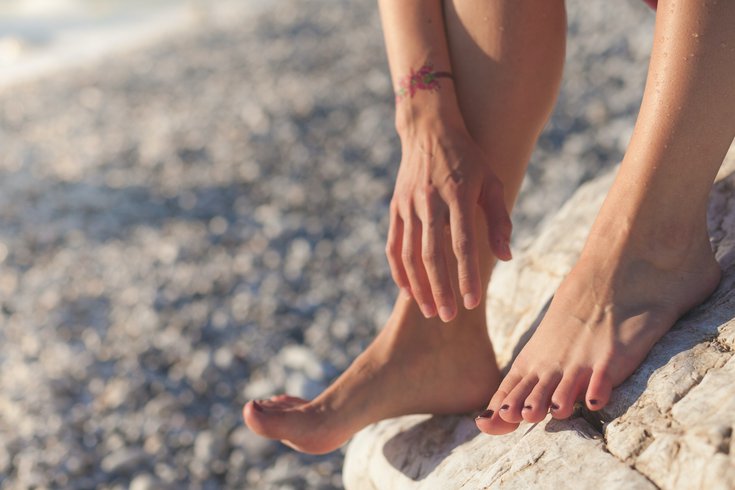
November 01, 2021
 Jan Romero/Unsplash
Jan Romero/Unsplash
Proper foot care is crucial for people with diabetes. A simple blister, callus, or even an ingrown toenail can quickly lead to serious complications.
Foot infections and other complications can be side effects of diabetes, particularly among those whose disease is poorly controlled or uncontrolled. These patients often develop neuropathy or nerve damage that causes tingling, pain or weakness in their feet.
Some people with diabetic neuropathy also experience loss of feeling in their feet, making them more prone to injury without realizing it. Left untreated, injuries can progressively get worse, potentially leading to the need for amputation.
A simple blister, callus, or ingrown toenail could quickly develop into an open sore or ulcer, resulting in a serious infection.
Nerve damage can also cause your feet to peel and crack, which can lead to an infection as well. After bathing, dry your feet and moisturize them using a plain petroleum jelly. Try to avoid soaking, as this can have a drying effect.
Calluses should always be trimmed by a health care professional. Never try to remove them yourself, especially not with a chemical that can burn your skin. To help keep any calluses under control between doctor's visits, you can use a pumice stone while the skin is wet. Make sure to moisturize the skin immediately after.
Peripheral artery disease, which reduces blood flow to the feet, is common in people with diabetes and can lead to complications. Poor circulation can cause intermittent claudication, which is pain in the the calves when walking fast or up a hill.
Because of all these potential complications, proper foot care is crucial for people with diabetes. Here are some tips for healthy feet from the American Diabetes Association and the Centers for Disease Control and Prevention:
1. Wash your feet thoroughly everyday.
2. Be sure to keep your feet dry at all times, especially between the toes. Moisture wicking socks can help.
3. Trim your toenails regularly. Use an emery board to file down sharp edges
4. Every day, check your feet for sores, cuts, blisters, corns or any redness. Always tell your doctor when you see something of concern.
5. Always wear proper-fitting shoes and don't walk around barefoot.
6. Have your feet checked at every health care visit.
Other changes in your feet that could be a warning sign of serious complications include thickened, yellow toenails; fungus infections between the toes; loss of hair on toes, feet or lower legs; dry, cracked skin on your feet; and changes to the shape of your over time.
Men are more likely than women to avoid caring for their feet properly, and they are also more likely to ignore complications of diabetes until it's too late. In particular, Hispanic men are more likely to ignore caring for their feet because of sociocultural factors.
As typically the providers for their families, Hispanic men tend to ignore their own health needs. They also gravitate toward natural remedies, such as aloe vera, which can lead to some discounting the value of modern wound care.
This Diabetes Awareness Month, the American Podiatric Medical Association has launched a public awareness campaign to make Hispanic men more aware of the foot complications that can occur with diabetes.
The campaign, Es Hora, encourages them to take steps to manage their blood sugar, be alert to changes in their feet, and see a podiatrist for regular diabetic foot care.
"Hispanics are twice as likely as non-Hispanic whites to be diagnosed with diabetes," Jeffrey R. DeSantis, president of the American Podiatric Medical Association, said. "Combine that with greater barriers to care, and this is a population at very high risk for serious complications from diabetes.